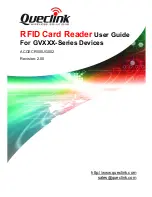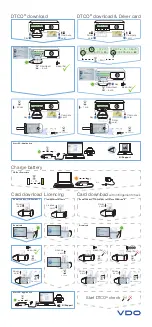
Multidrop Communications
A-28
MS-860 Industrial Raster Reader User’s Manual
Polling Sequence
Data that is transmitted to the host (symbol data, noread messages, counters, etc.) via
concentrators is solicited by poll requests from the host.
The polling sequence example is by poll address 1E (ASCII hex value for Reader 02)
and a REQ (request). The reader responds by first transmitting its own address, 1E,
followed by a STX (start of text) character, and then the data. Next it transmits an
ETX (end of text) character and an LRC (longitudinal redundancy check) character.
If the concentrator (or controller) receives the data from the reader and is able to validate
it with an LRC calculation, it responds with an ACK (acknowledgment). If the reader in
turn receives the ACK, the reader ends this exchange with a RES (reset).
Polling Reset
• If the reader has no information, it responds to a poll request by transmitting a RES
(reset).
• If the reader receives a NAK instead of the ACK after transmitting its data string, it
will re-attempt to send the data string up to three times. If the reader still does not
receive an ACK, it will send a RES (reset) and discard the data in its buffers.
• If the reader transmits data to the concentrator and the concentrator responds with
an ACK or NAK, but the reader doesn’t receive the concentrator’s response, the
reader will timeout and send a REQ to the concentrator and request another
response. If after three retries (the number of times it transmits a REQ to the con-
centrator) the reader receives no response, it ends the transmission with a RES
(reset).
Concentrator
RES 1E REQ
ACK
Reader 02
1E STX DATA ETX LRC
RES
Start of Sequence
End of Sequence
Polling Sequence
Artisan Technology Group - Quality Instrumentation ... Guaranteed | (888) 88-SOURCE | www.artisantg.com
















































